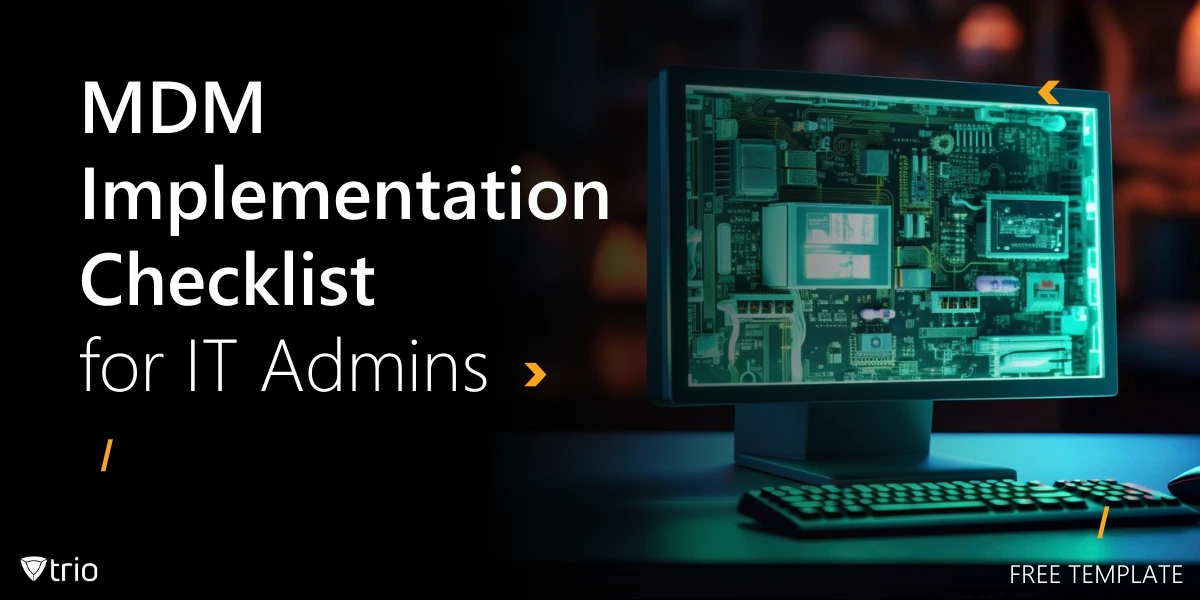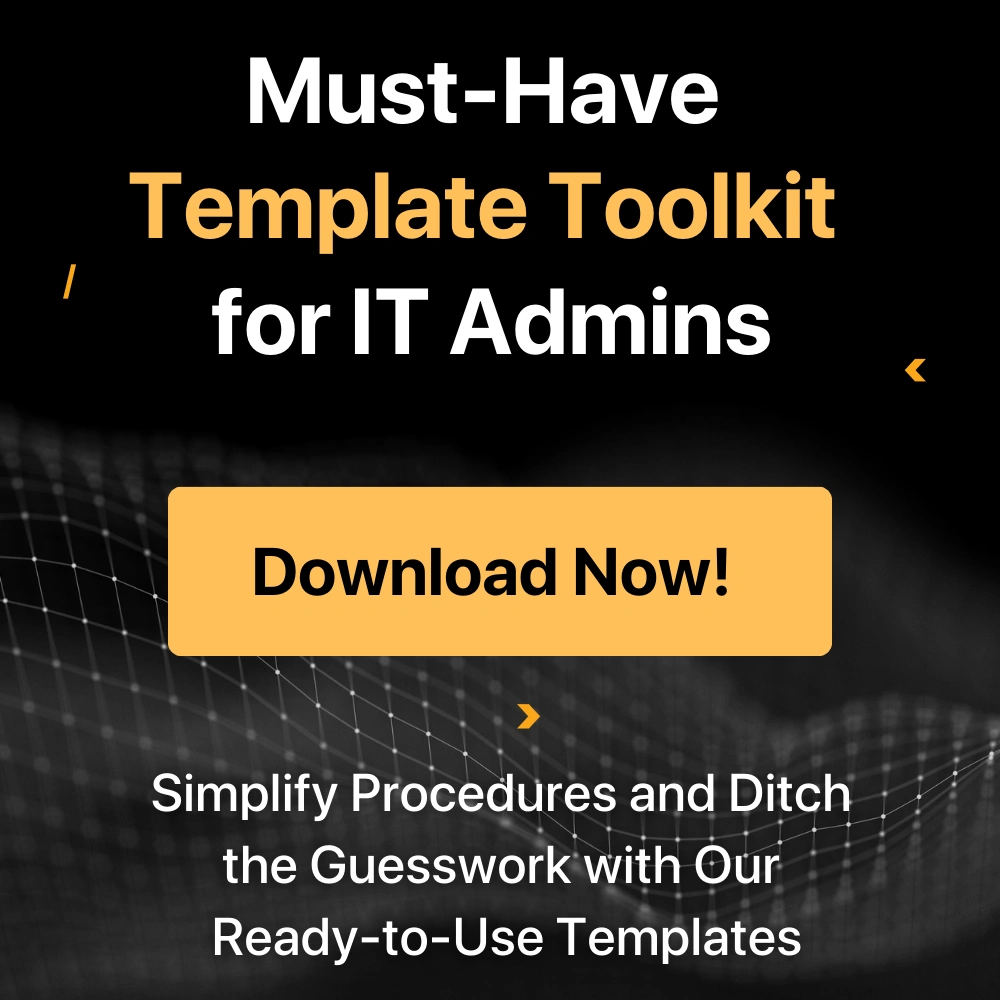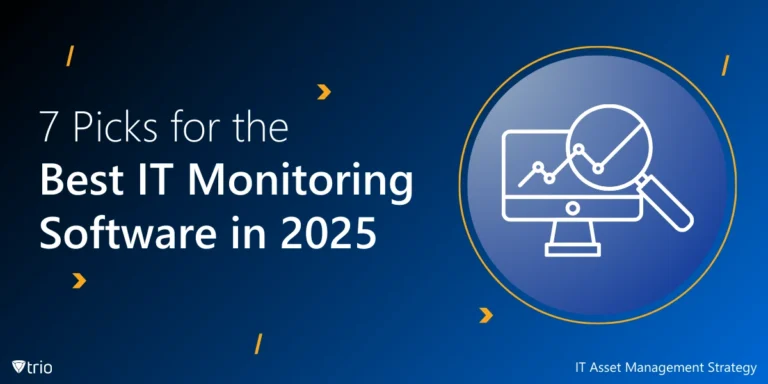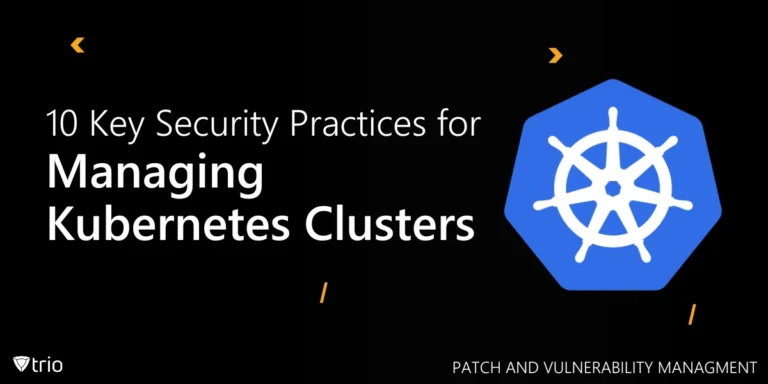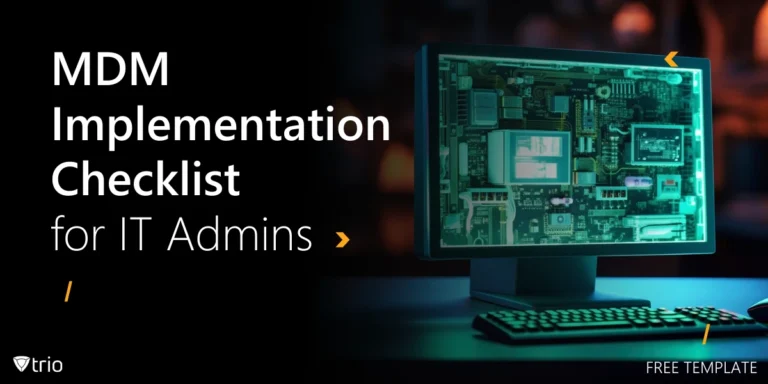Managing a growing fleet of mobile devices is no easy task for IT admins. Security risks, compliance requirements, and device mismanagement can quickly spiral out of control without a structured approach. Whether you’re dealing with lost devices, unapproved apps, or inconsistent security policies, an MDM (Mobile Device Management) solution is the key to regaining control.
But implementing MDM effectively is just as important as having one in place. A poorly executed rollout can lead to frustrated employees, security gaps, and operational inefficiencies. That’s why we’ve created a practical Mobile Device Management (MDM) implementation checklist—so you can streamline deployment, enforce security policies, and ensure long-term success. Follow these steps to make MDM work for your business and eliminate mobile device chaos once and for all.
Why Every Business Needs a Mobile Device Management Solution
Every business, regardless of size or industry, needs a Mobile Device Management (MDM) solution to ensure security, efficiency, and compliance in an increasingly mobile-driven workplace. With employees using smartphones, tablets, and laptops for work, MDM helps IT teams remotely manage, secure, and monitor devices to prevent data breaches, enforce security policies, and streamline software updates. Without proper management, lost or stolen devices can expose sensitive corporate data, putting businesses at risk of cyber threats and regulatory non-compliance. Additionally, MDM solutions reduce IT workload by automating device provisioning and troubleshooting, allowing companies to scale operations seamlessly.

What Are the Benefits of Implementing an MDM Solution?
Implementing an MDM solution offers businesses enhanced security, improved efficiency, and streamlined IT operations. MDM helps protect sensitive data by enforcing security policies, enabling remote device locking or wiping, and ensuring compliance with industry regulations. It also simplifies device provisioning, software updates, and troubleshooting, reducing IT workload and operational costs. Additionally, MDM provides better visibility and control over company devices, improving productivity and minimizing downtime. These benefits make MDM an essential tool for organizations looking to secure and optimize their mobile infrastructure.
10 Steps for Implementing an MDM Solution
Implementing an MDM solution doesn’t have to be overwhelming. Here’s a summarized version of each step to guide you through the process:
- Define Requirements:
Assess your organizational needs, decide on the device types (BYOD, company-owned, or both), and establish a clear budget to meet your MDM implementation requirement. - Choose the Right MDM Tool:
Evaluate potential solutions for cross-platform compatibility (iOS, Android, Windows, etc.), robust security features like encryption and remote wipe, and scalability that supports long term growth. - Prepare Your Network:
Ensure your existing systems can support the increased traffic from an MDM platform by optimizing network connectivity and adjusting firewall or proxy settings. - Establish Security Policies:
Create and enforce strong password rules, set up encryption standards, and enable remote lock and wipe features to safeguard critical data and maintain data security. - Set Up Device Enrollment:
Streamline the process by implementing automatic enrollment methods and integrating user authentication (such as Single Sign-On) to simplify onboarding. - Configure Management Policies:
Define clear policies for app management, automate Wi-Fi and VPN configurations, and enforce compliance rules to ensure secure and efficient device operations. - Test the Implementation:
Launch a pilot program with a small group of devices, monitor performance closely, and resolve any issues before a full-scale rollout to ensure successful MDM implementations. - Training and Documentation:
Provide IT staff with detailed training on the MDM platform’s features and create end-user guides to promote smooth adoption and improved data handling. - Monitor and Maintain:
Regularly review device health reports, schedule software updates, and implement an incident response plan to keep the system operating at peak operational efficiency. - Review and Optimize:
Continuously assess your MDM strategy by collecting feedback and refining policies, ensuring your solution adapts to evolving business needs and emerging threats.
Free MDM Implementation Checklist for IT Admins
If you want an in-depth, actionable, and complete MDM implementation checklist, click download below.
How Trio Can Help with Your MDM Implementation
Trio offers a simplified MDM solution that makes the complexities of mobile device management less overwhelming. With easy bulk deployment and multi-platform support, Trio ensures that your organization’s mobile devices are managed seamlessly across various operating systems. Its user-friendly interface and strong security features help you enforce stringent data security measures, protecting critical data and ensuring compliance with industry standards.
Furthermore, Trio’s solution is designed to integrate effortlessly with your existing systems, making it the ideal partner for successful MDM implementations. By leveraging advanced features like real-time device monitoring, remote troubleshooting, and automated policy enforcement, Trio boosts operational efficiency and supports long-term business growth. With Trio, you can be confident that your MDM strategy is built on a strong foundation of improved data stewardship and secure, scalable mobile device management.
Ready to simplify MDM for your business with Trio? Make sure to book your free demo today!
Conclusion
Implementing an MDM is essential for any organization aiming to secure its mobile environment while boosting operational efficiency. By following our MDM implementation checklist for IT Admins, you can systematically address each aspect of your MDM implementation requirement—from defining your needs to continuously optimizing your strategy.
In summary, the integration of a well-structured MDM platform can transform the way your organization handles mobile devices, ensuring that your critical data remainssecure and your operational efficiency is maintained across all levels. With the right MDM solution and a proactive approach to device management, businesses of all sizes and industries can enjoy the benefits of streamlined operations, reduced security risks, and an overall boost in productivity.
Get Ahead of the Curve
Every organization today needs a solution to automate time-consuming tasks and strengthen security.
Without the right tools, manual processes drain resources and leave gaps in protection. Trio MDM is designed to solve this problem, automating key tasks, boosting security, and ensuring compliance with ease.
Don't let inefficiencies hold you back. Learn how Trio MDM can revolutionize your IT operations or request a free trial today!
